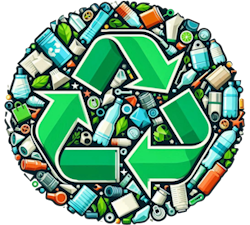Hazardous waste management is an essential aspect of environmental protection particularly in a state with strict regulations and one which has a progressive approach to sustainability like California.
California has tons of hazardous waste gleaning for management, treatment, and disposal because hazardous waste is generated in this populous and industrial state. By using a combination of policies, innovative technologies and public outreach efforts the state takes an integrative approach to reducing the health and environmental risk of hazardous waste, including with better dumpster rental services.
Understanding Hazardous Waste
Hazardous waste itself is defined as any material that poses significant or potential threats to public health or the environment. This proves to be the case, with these are system assets and thus also hazardous materials suitable for incineration that would survive if more dangerous (i.e., ignitable, corrosive, reactive or toxic) than flushing through the sewers only.
Normal paths that produce dangerous waste incorporate mechanical procedures, human services facilities, family units and farming tasks. In the state of California in cities like Riverside, businesses are required to classify and dispose of hazardous waste pursuant to state and federal laws provided in the Resource Conservation and Recovery Act (RCRA) regulations as administrated by USEPA and the California Hazardous Waste Control Law.
Regulatory Framework
The California Department of Toxic Substances Control (DTSC) oversees hazardous waste management in the state. These claims have earned the DTSC villains in this saga, as it administers regulations that pertain to hazardous waste handling, storage and disposal. The regulations, which are some of the strictest in the nation, apply to any entity that generates hazardous waste and include reporting, labeling and disposal requirements. The state has put in place a tiered system for hazardous waste that groups materials by their hazard and conversion potential to make it easier to handle and manage them.
California advocates the reduction of hazardous waste through its comprehensive programs on waste minimization. To this end, the state promotes California Green Business Program initiatives in which businesses are introduced to greener production techniques and sustainable practices. The regulatory program targets resources to assist businesses in reducing hazardous waste and improving their environmental performance.
Waste Treatment and Disposal
The best way to reduce risk for hazardous waste is to prevent it from being generated; once its generation begins that then the only option left is treatment and proper disposal. In California treatment options including incineration, chemical treatment, and secure landfilling. The state has a lot of hazardous waste facilities, specializing in varying types of waste and each hold an operating license. Under these provisions waste should be processed in a safe manner and must comply with strict environmental regulations when it is processed since the main goal is to make sure that appropriate treatment of waste and applying effective emission controls.
California has also encouraged the recycling and recovery of some hazardous materials, including using dumpster rentals. For instance: batteries, electronic waste, fluorescent lights etc. can all be recycled to recover some of the valuable resources in them and thus prevent specific or general contamination of our ecosystems. The state promotes recycling in residents and businesses to join aid through programs as a Statewide eWaste recycling limbo, which allows for the development of electronic waste drop sites.
Public Involvement and Public Education
Public education is required to improve public awareness regarding the handling of hazardous waste in California. The aforestated comes with the state investing in educational campaigns to inform the public about the hazards of hazardous waste and the need to dispose properly. Programs like the “Household Hazardous Waste (HHW) Collection Events” can ensure people get rid of dangerous household items (incl. paints, solvents and even pesticides) in a safe manner rather than just tossing those in the landfill… and soon into the water or soil.
Stakeholder meetings and feedback opportunities also promote community engagement. The DTSC not only solicit the public on how best to manage hazardous waste, but also facility siting which means residents have a voice in what happens around them that could affect their health and environment.
Looking forward
Even with a strong hazardous waste management system, California faces obstacles. While the production of hazardous waste, which comes from expanding industries, new toxic substances and increasingly advanced treatment technologies is still rising. It is also important for ensuring compliance among businesses, particularly smaller ones with limited capacity to take their own sanitation and environmental integrity.
In the future, California plans to improve its waste disposal processes by investing in R&D for eco-friendly new technologies and to boost educational awareness while strengthening regulation. Aggravating emphasis is also being back on Circular Economy Principles of designing for end- of-life (resource recovery) and reduced waste throughout the product lifecycle.
Protecting human health and the environment is the core mission of hazardous waste management in California. The state works to mitigate the effects of hazardous waste through stringent regulations, new treatment techniques, and community involvement. In a changing landscape of challenges, California maintains its role as global innovator and forward-leading force in responsible solutions for sustainable waste management with the ultimate aim to preserve health outcomes and nature into the future.
